Axial skeleton includes
- Cranium
- Vertebral column
- Ribs
- Sternum
- Sacrum
Cranium

- protection for head organs (eyes/nose/ears/mouth/brain...)
- mvt bones: occipital +temporal bones
- mastoid process: attachment point for muscles (sternocleidomastoid, upper trap, humeral head muscle)
- formal magnum: spinal cord runs in middle
Vertebrae
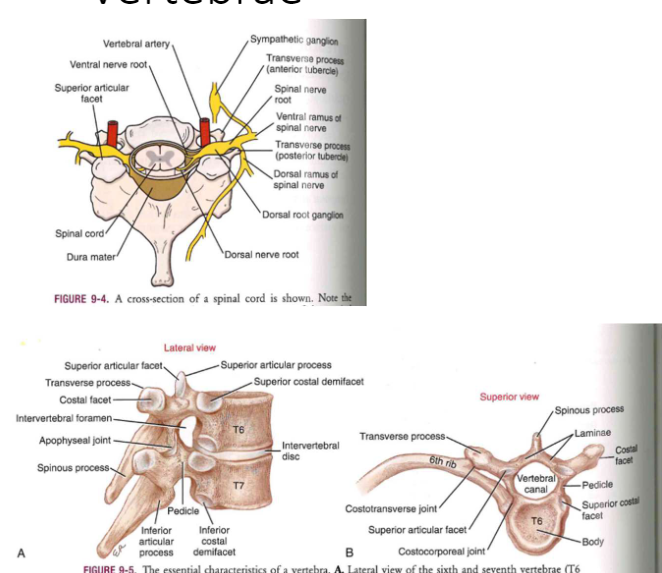
- good design for distributing load (arches)
- cauda equina (horsetail)
- anterior: most of the weight-bearing
- posterior: transverse processes, laminae,
particular cross-section, vestibular arch
- main protection, stability
cervical bones
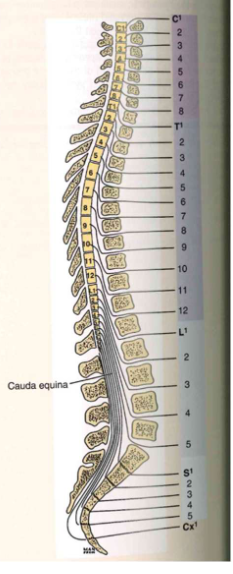
C1-7/8
thoracic bones

T1-12
lumbar bones

L1-L5
ribs

- ribcage: protect internal organs (heart)
- posterior: head, neck, vestibular process, turbecle
- 2 synovial joint: costacoperal joint + costotransverse joint
- ribs articulate to vertebrae
rib's don't go out
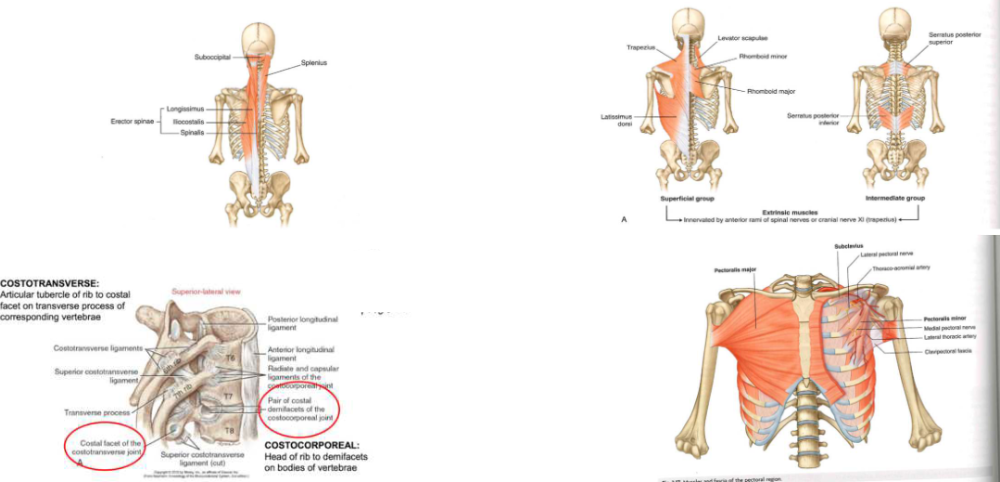
- break or dislocate
- might feel like going out
- levels of anatomy hold ribs in place (transverse process + scapula head)(muscles: traps, erector spinae. intercostal muscles)
- words matters to people (make people feel weak)
Sternum
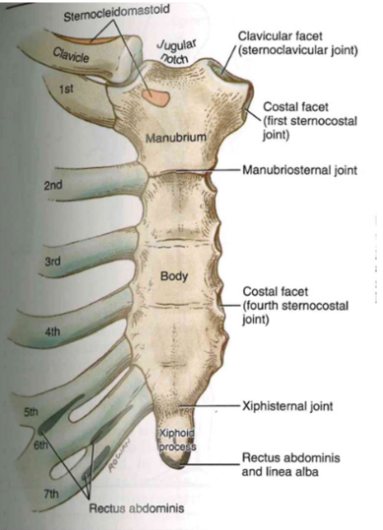
- joints (from top to bottom0
- sternoclavicular joint/clavicular facet
- 1st sternocostal joint (costal facet)
- manubriosternal joint
whole vertebral column
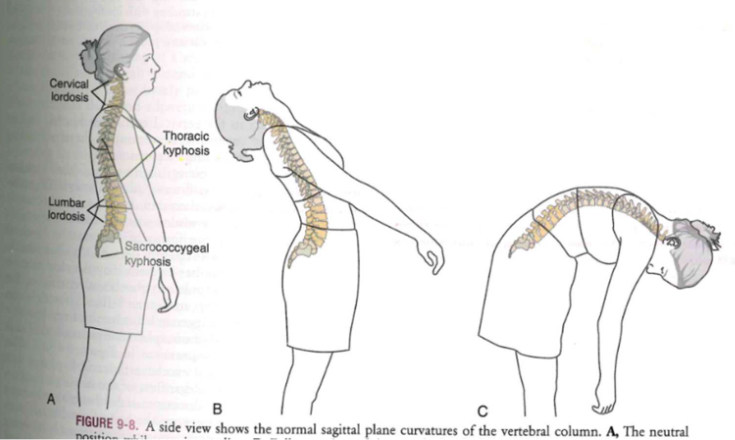
- 33 verteberal segments
- 7 cervical. 12 thoracic, 5 lumbar, 5 sacral, 4 coccygeal segments
- Top
to bottom curvatures (4)
- cervical lordosis
- thoracic kyphosis
- lumbar lordosis
- sacrococcygeal kyphosis
- insane support
Ligament
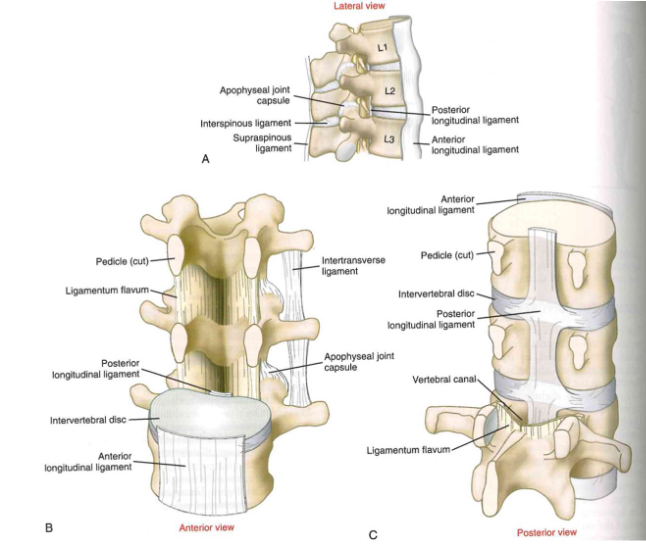
- provides insane support
- ligamentum flavum (innermost lig. in center)
- supraspinous + interspinous ligaments (between each spinous process)
- intertransverse ligaments (between adjacent transverse process, vertical way)
- anterior long. ligament: big vertical lig. on front side)
- posterior long ligment: big vertical lig. behind circle bone)
cervical vertebrae
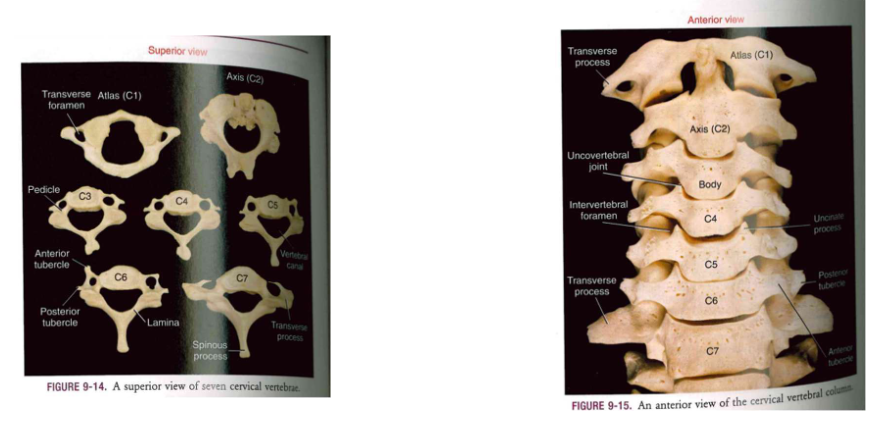
- atypical vert: 1(no vertebral body), 2 (odontoid process/dens)
, 7 (large spinous process)
- look funny
- typical vert: 3-6
- all have transverse vertebrium (vascular blood supply to brain)
Thoracic Vertebrae
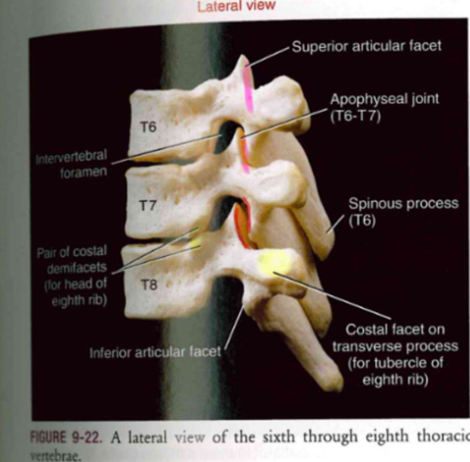
- Typical: T2-T9
- costocorporeal joints + apophyseal joint (T6-T7)
- Atypical: T1, 10, 11, 12
- T1: full costal facet
- T10-12: lack costotransverse joints (floating ribs attachment)
lumbar vertebrae
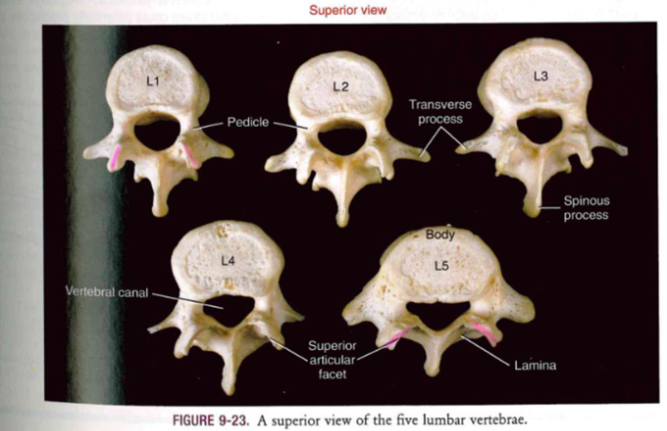
- big vertibral body => larger body mass (2x as cervical)
- C-spine: fully vertical
Sacrum & coccyx
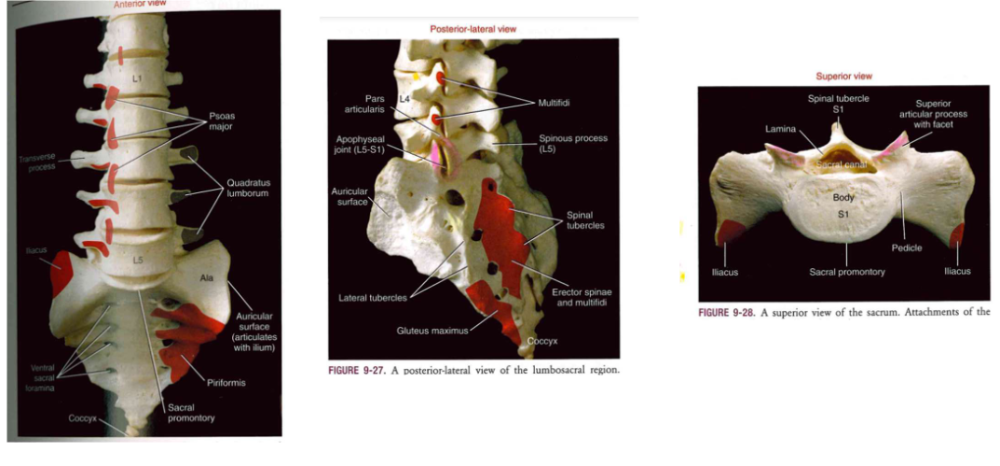
- sacrum: where lumbar spine sits
- articulate with pelvis // push compressive force out to pelvis
- coccyx: attachment to muscles (pelvis floor)
General arthrology structure (joint)
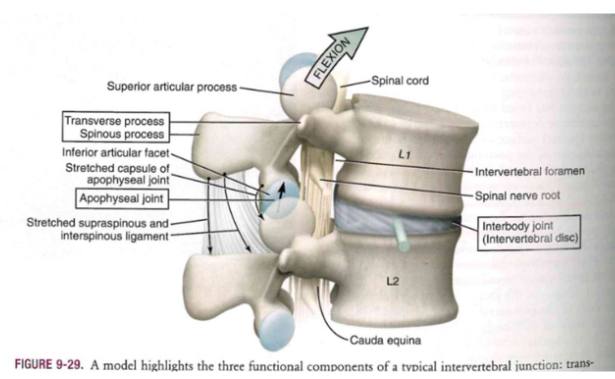
- transverse+spinous processes
- increase moment arms for lumbar
- apophyseal joint
- where guide intervertebral motion (railroad tracks)
- intervertebral disc
- load absorption +dispersion
General osteokienmatics: axial rotation
- (torso rotate R/L)
- plane of motion: horizontal
- axis of rotation: vertical
General osteokienmatics: lateral flexion
- (side2side bend)
- plane of motion: frontal
- axis of rotation: anterior-posterior
General osteokienmatics: flexion +extension
- (bend forward+back)
- plane of motion: sagittal
- axis of rotation: medial-lateral
General osteokienmatics
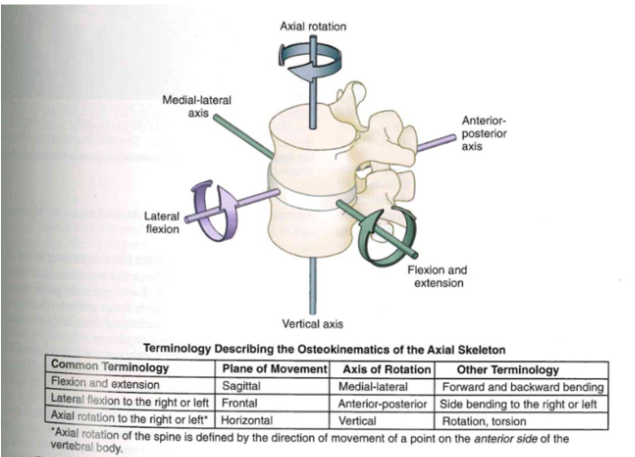
- flexion +extension
- lateral flexion
- axial rotation
what are apophyseal joints?
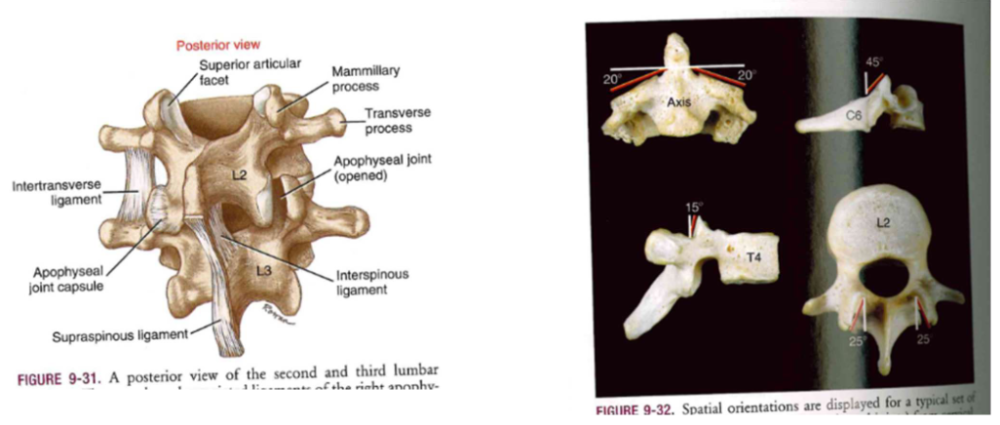
- 24 pairs of joints
- plane joints (slide past each other)
- mechanical blocks (anterior translation of vertebrae
// V. past each other)
- prevent cutting into spinal cord
- more horizontal = more axial rotation
(CERVICAL)
- less vertical = less axial rotation (thoracic/lumbar)
Structure of intervertebral discs
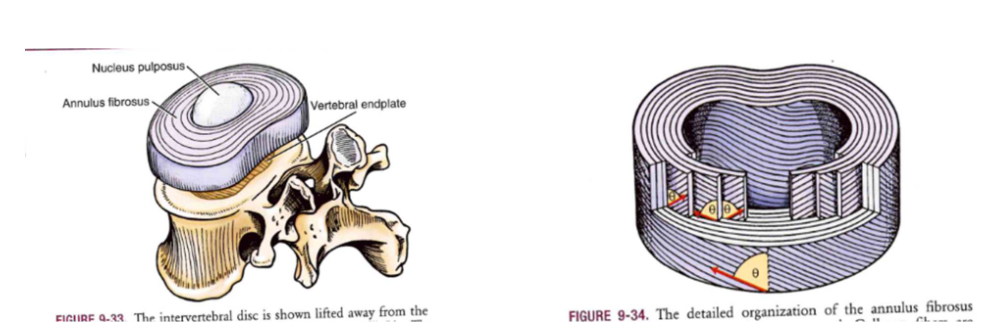
- research on dead stuff
- nucleus pulposus: gel-like
(70-90% of water), hydrolic shock absorber (water hard to compress),
force distribution
- belly flops hurt
- annulus fibrosis: many layers, good with dealing with diff. motions,
- fully hydrated = can disperse pressure really well
- dehydrated= force go into apopseal joints (??)
- endcaps / endplates: low blood flow
Jelly rant
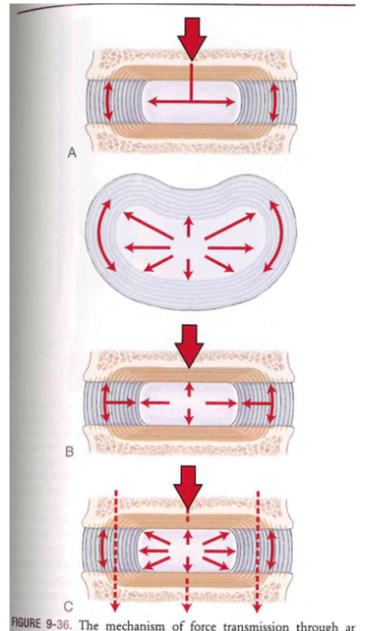
- 15-25 collagen rings
- gum stacked between tire
Spine coupling
- When the spine moves in one plane, there exist
automatic
(obligatory) movements in another plane- Muscle actions
- Articular alignment of facets
- Preexisting posture
- Stiffness of connective tissues
- Geometry
Spinal coupling in the cervical spine
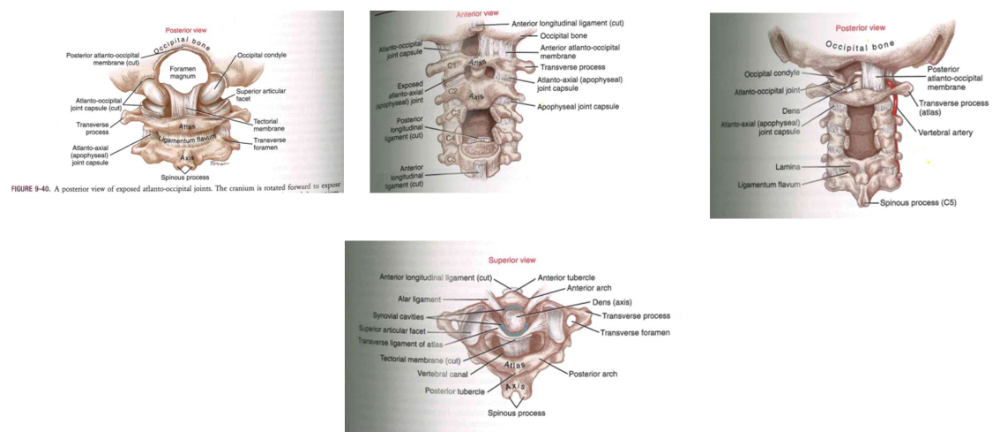
Craniocervical extension (80 degrees)
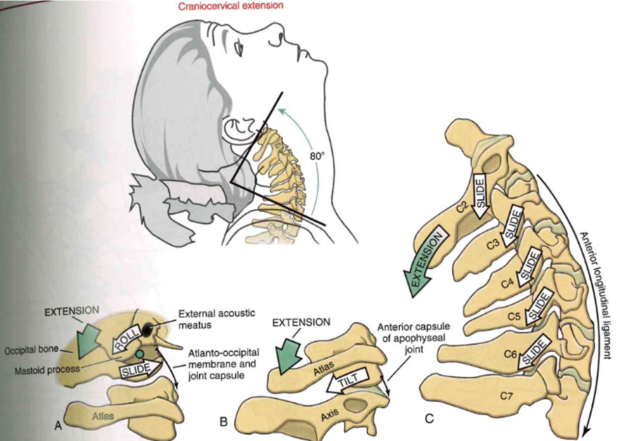
- convex on concave (base of skull + first vertebra) // roll + slide
- rest are planar (slide past each other)
- downward extension // decrease of space [cervical 1 upward slide of top vertebrae + top joint slides down on bottom joint+ head roll back + slide foward]
Craniocervical flexion (45-50 degrees)
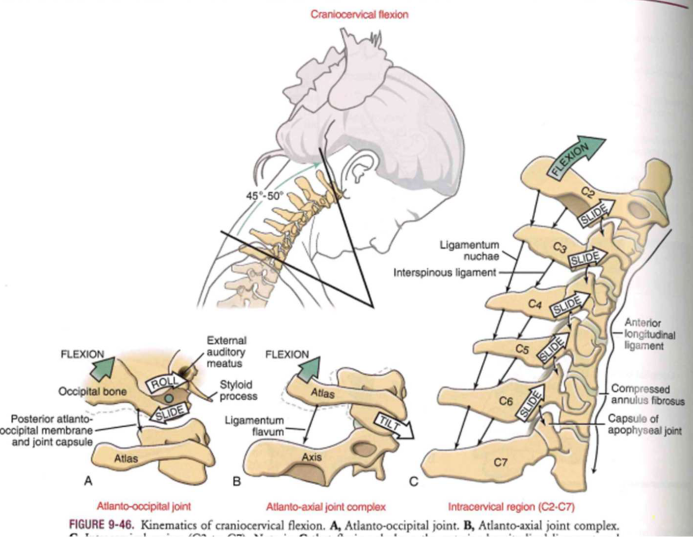
- downward flexion // increase of space [cervical 1 downward slide of top vertebrae
- top joint slides up on bottom joint
- head roll foward+ slide back
Rotation (35-40 degrees each side = 80 degrees both sides)
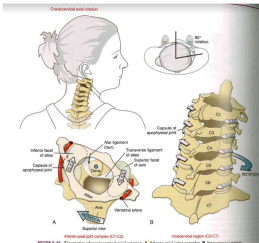
- side you are turning to
- turning facets drop-down slide (extension) + top facets upward slide (side turning away from)
- turn to
right
- extent on right + flex on left side
Side bending (40 degrees)
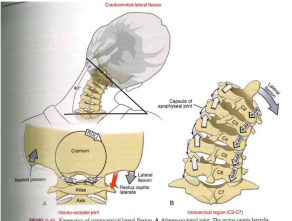
- couple with rotation (roll top + slide bottom)
- decrease space + backward slide on side you're turning to (dropping to) [extension]
- opening + upward slide of side turning away from [flexion]
ROM of joint in craniocervical region
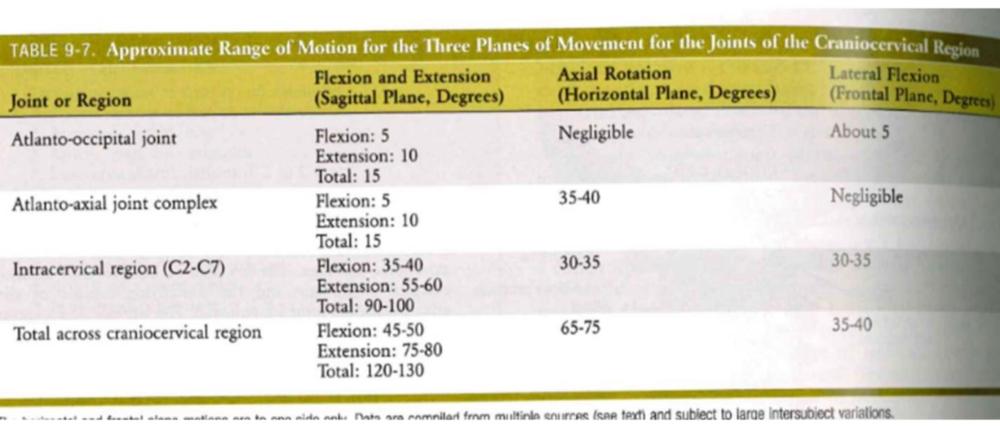
- 45 degree rotation
Thoracic kinematics
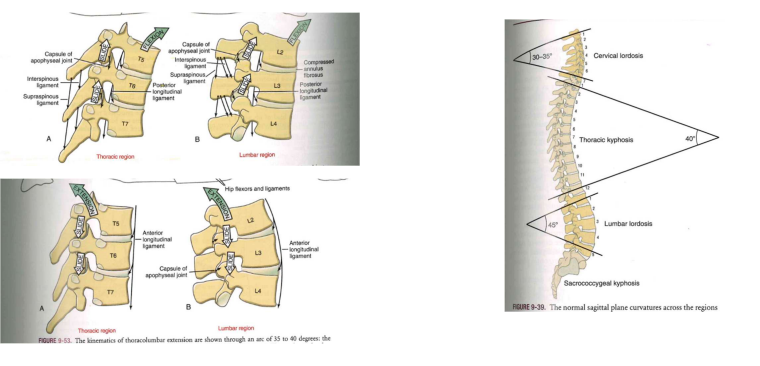
- 15-25 degree (more vertical = not alot of movement)
- mostly flexion + extension
- more lumbar mvt
Thoracic + sacral kinematics/movement
- coupling event with sidebend+rotate
- side rotating toward (downward glide) + side rotate away (upward glide)
- not lots of rotational (rotating chest area) = protection design (facets + rib cage)
Lumbar kinematics
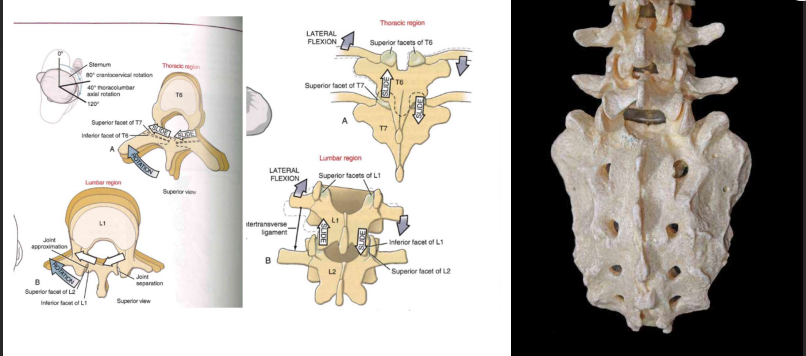
- no/not a lot of rotation = very verticle + facets
- spine needs to work together
Lumbar kinematics Injury
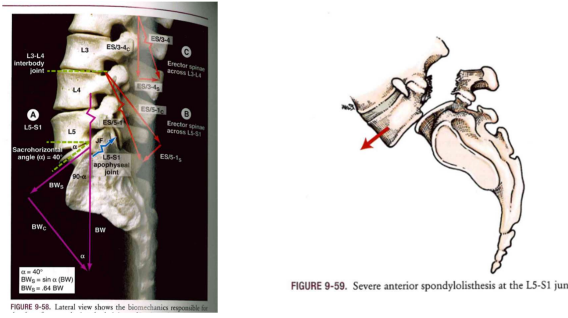
- BW creates shear force
- prevent movement L5 slide off sacrum: anterior longitudial ligament + apophyseal joints mvt (anterior side)
- common fractures by hyperextension: dancers + linemen
Lumbopelvic Rhythm
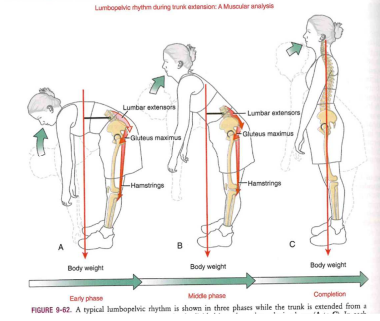
- pelvis and lumbar spine move together
- load sharing with lumbar mvt = use whole posterior chain (ham, calve)
- stronger to lift in bent spine (use passive tension = muscles + lig. on stretch)
Spinal motion
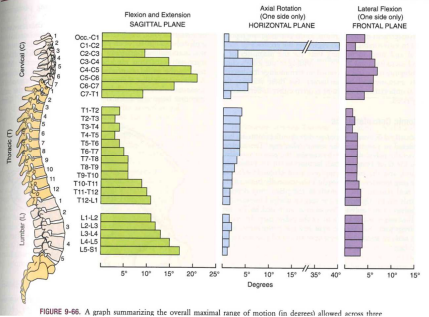
- Flexion: happens on cervical (most) -> lumbar -> T10-12
- Rotation: shared through all // especially C1-C2
- Lateral/side bend: C2-7 (most), but used with all (not a lot tho_
- Thoracic not do much = ribcage anatomy
Sacroiliac Joint
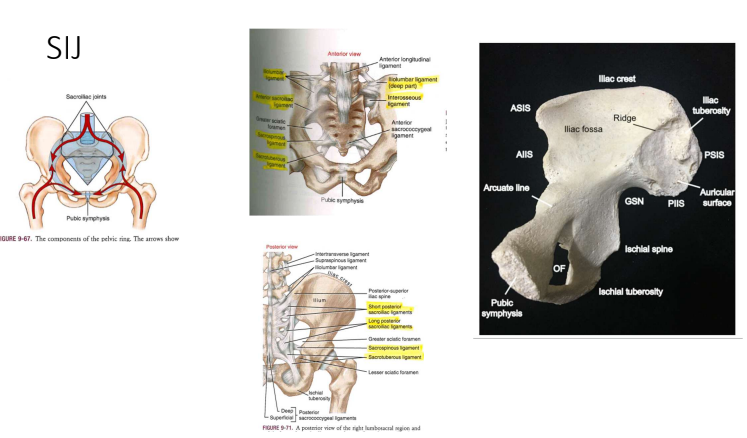
- synovial in children = fused as adults
- articular surfaces: rough, increased interlocking
- force transfer btn trunk + legs => HEAVY ligament support
SIJ kinematics
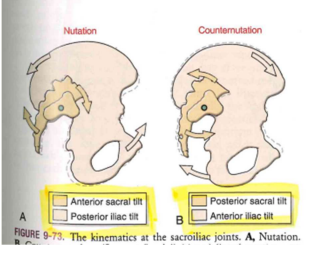
- Nutation: BW want to create N. = help push force through system
- anterior sacral tilt
- posterior illiac tilt
- countemutation
- posterior sacral tilt
- anterior illiac tilt
SIJ is “out” you are in the ER or dead

- pelvic ring fracture (most likely) > dislocate
- sacrum. ischium, ilium and pubic bone
- noney pathology or fall or smt with high force (car accident)